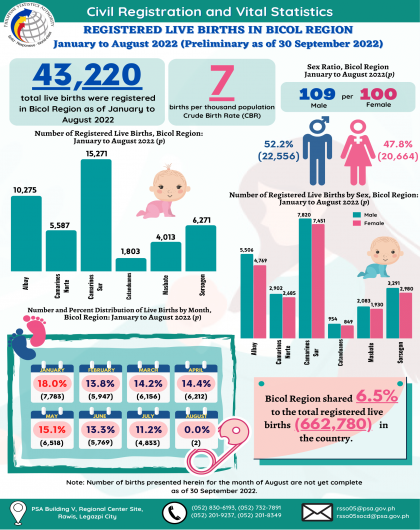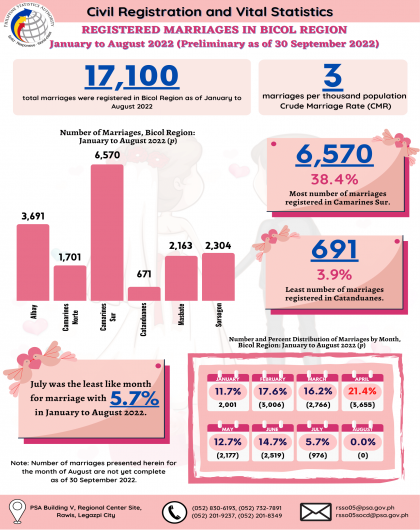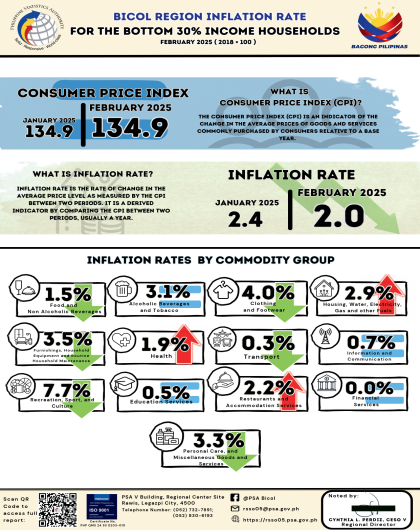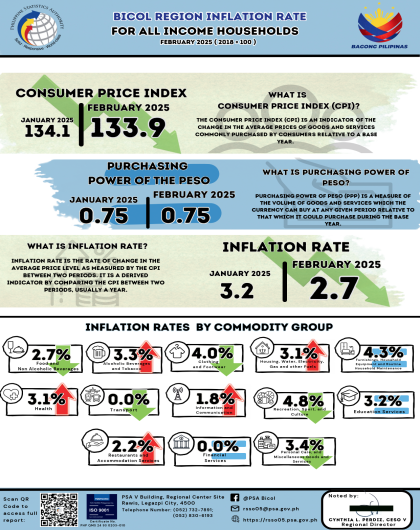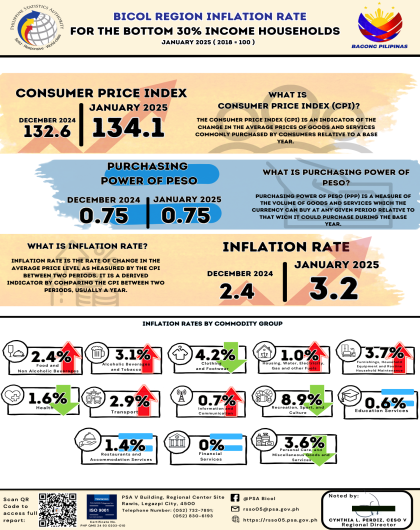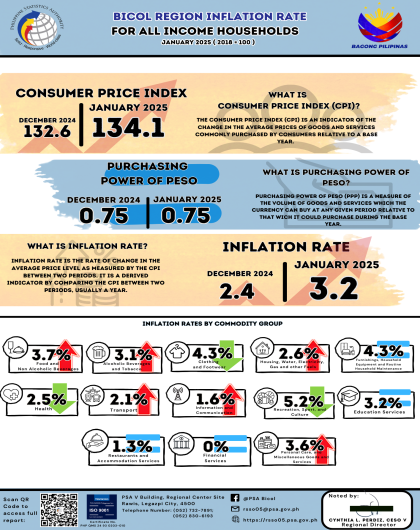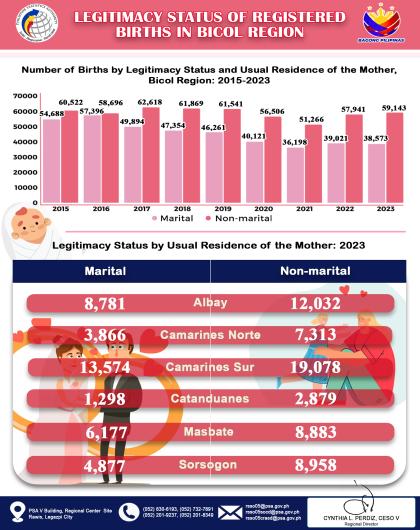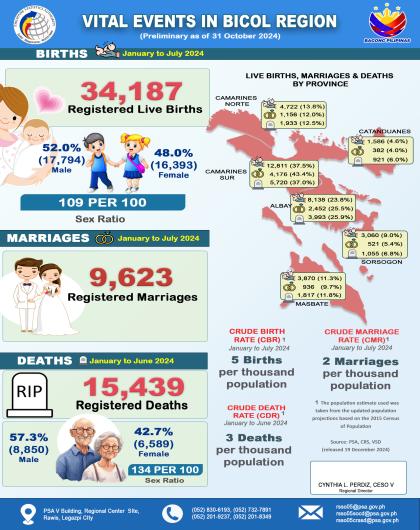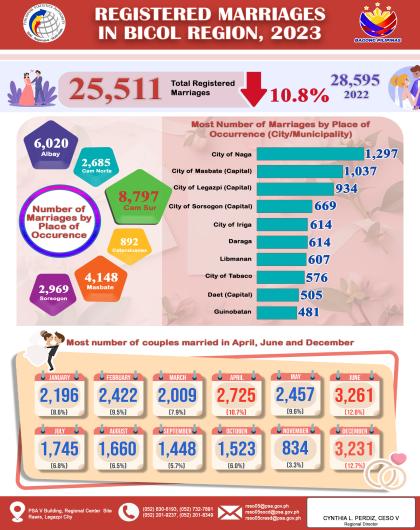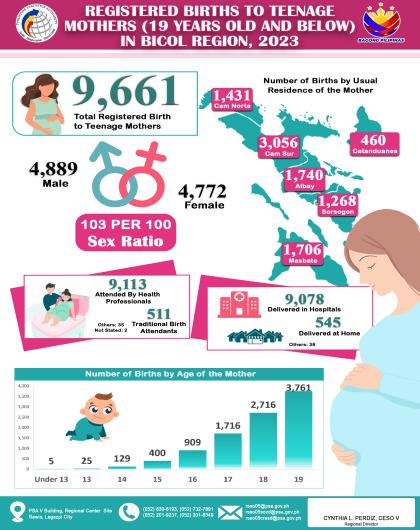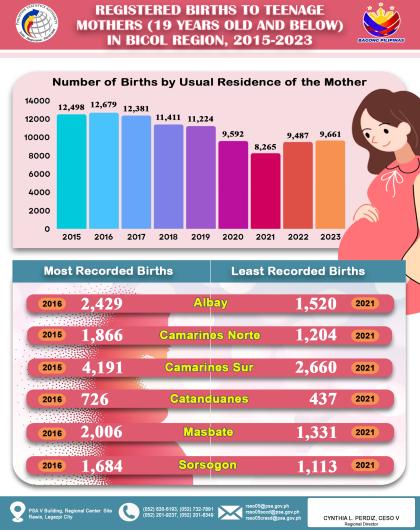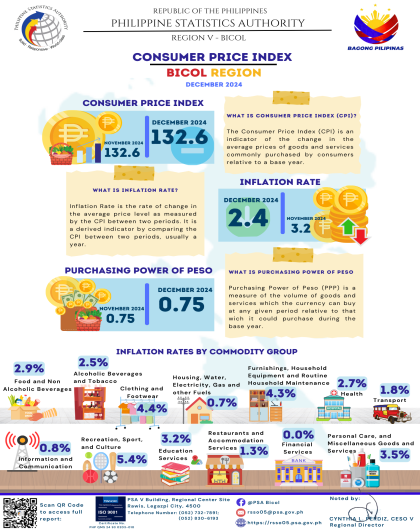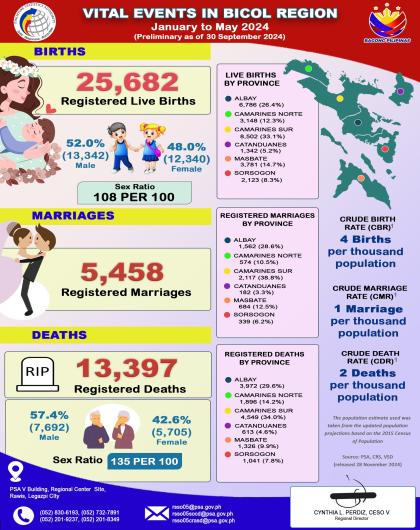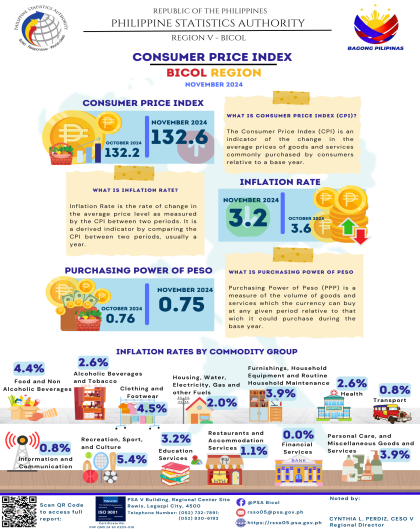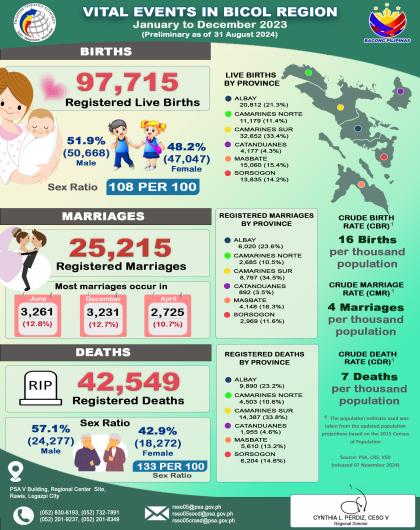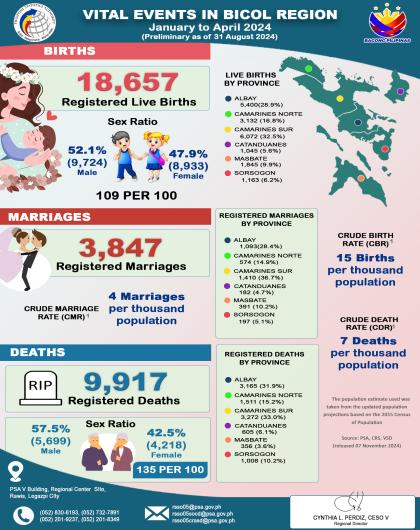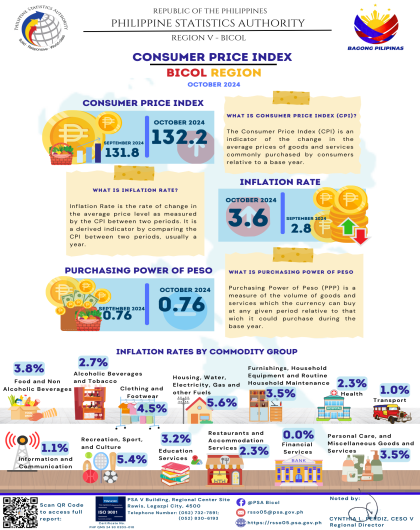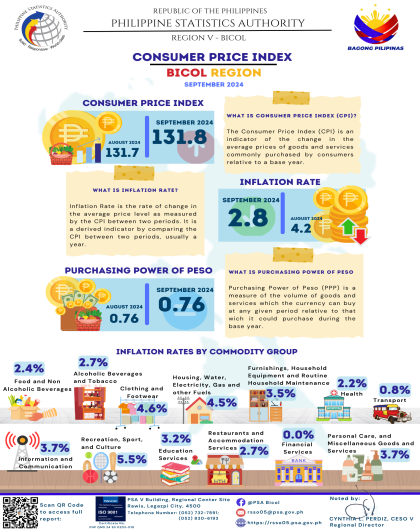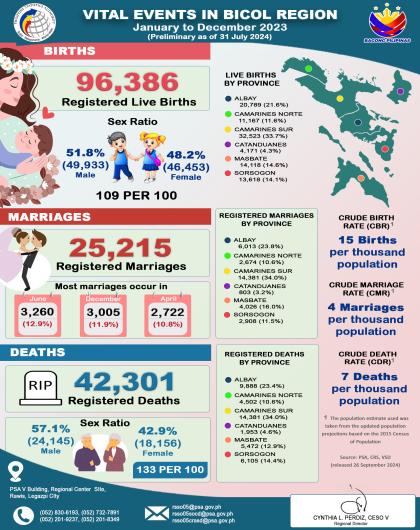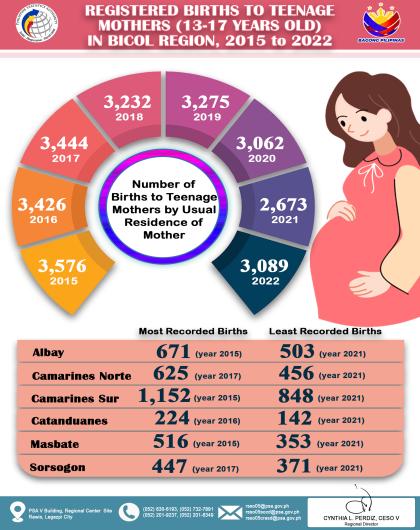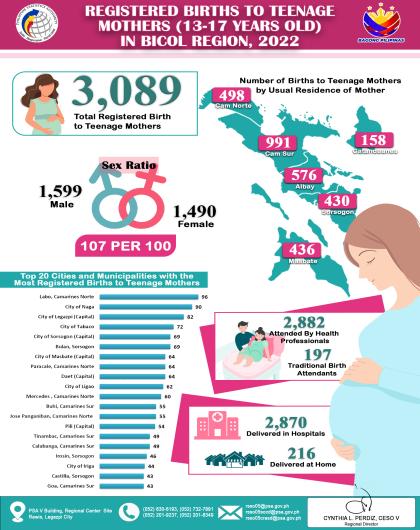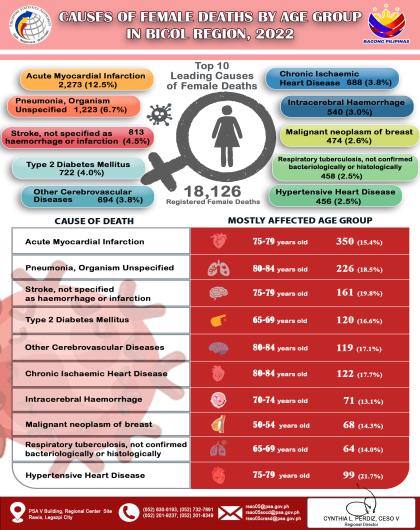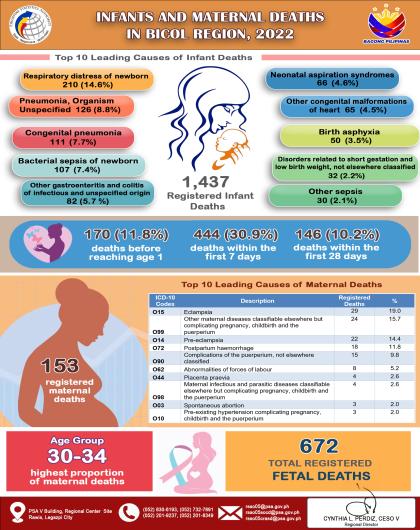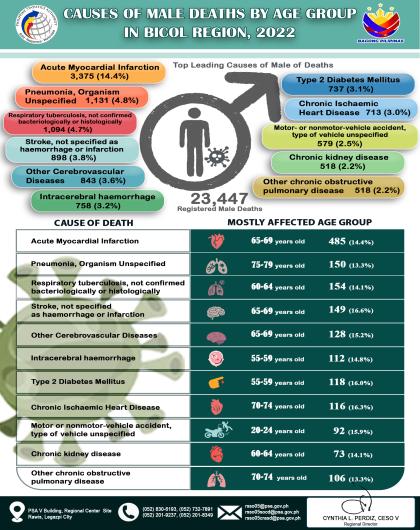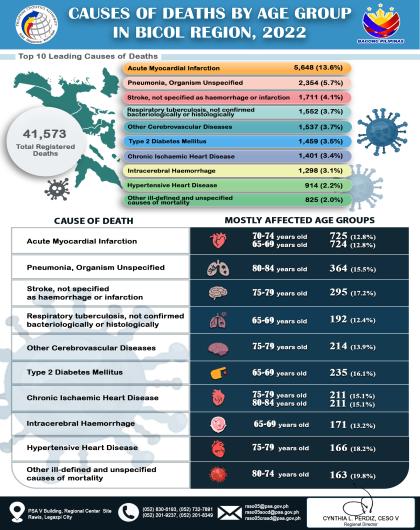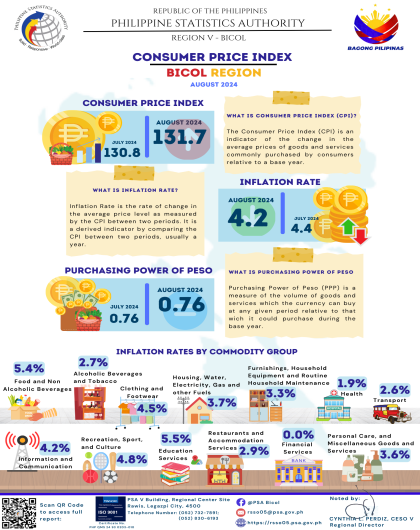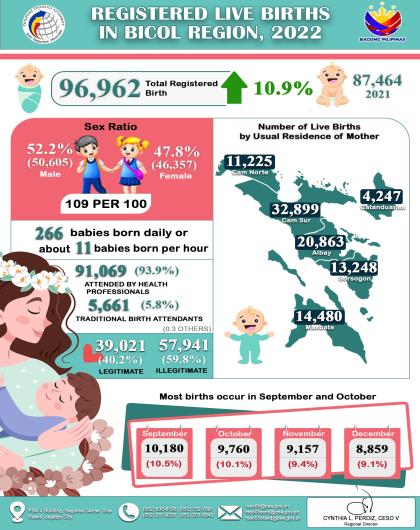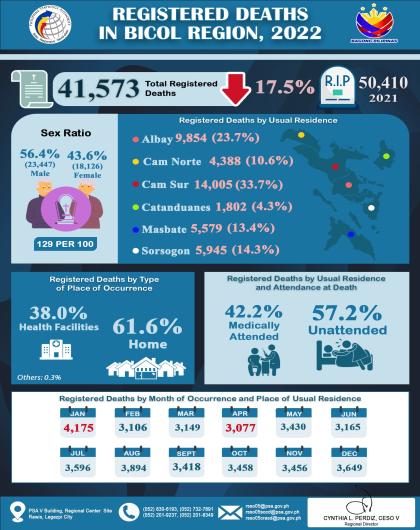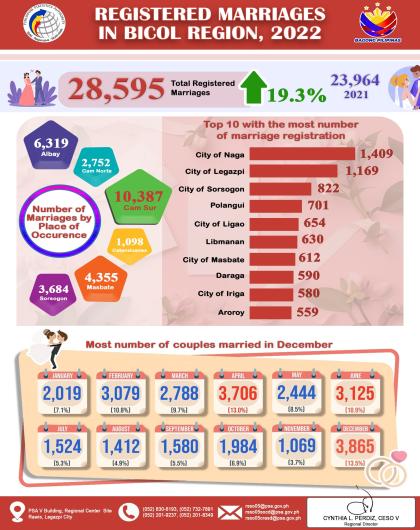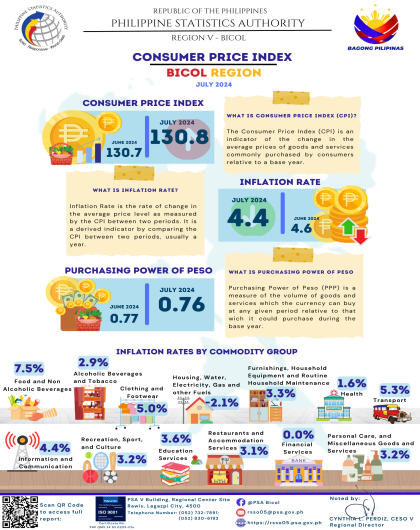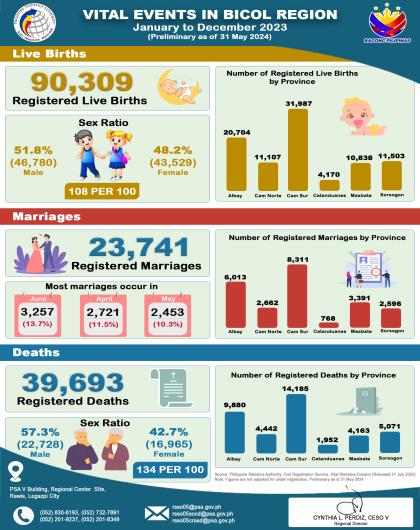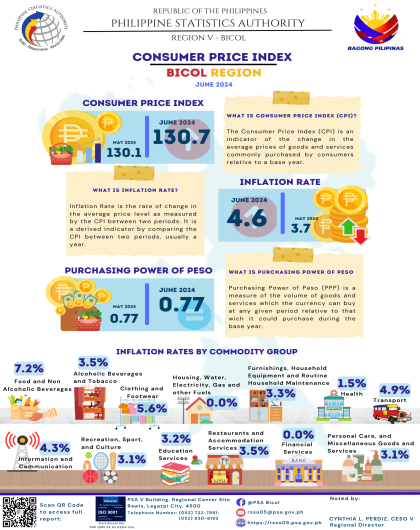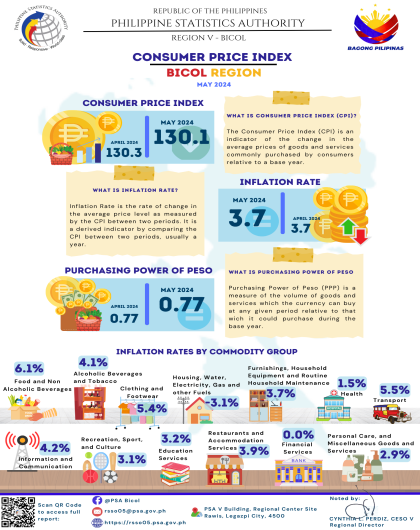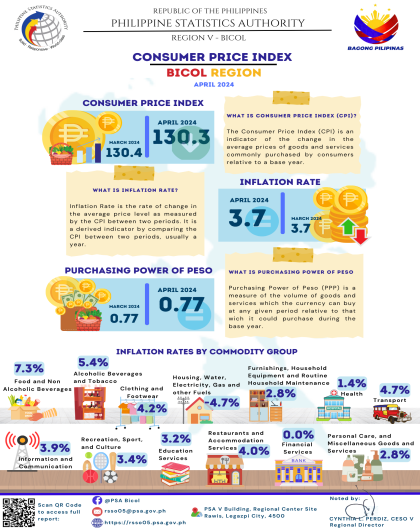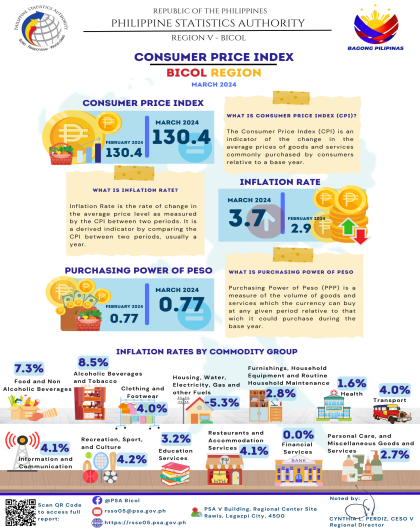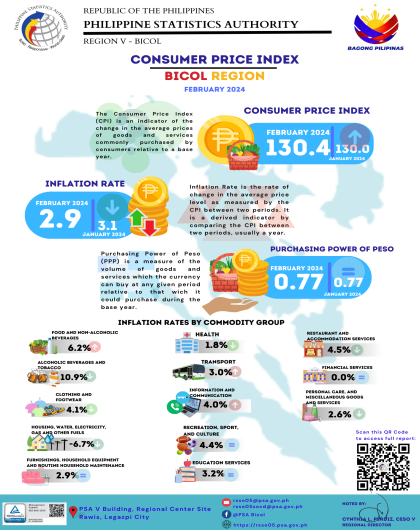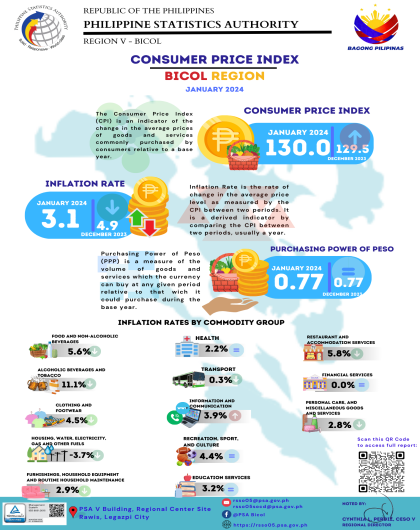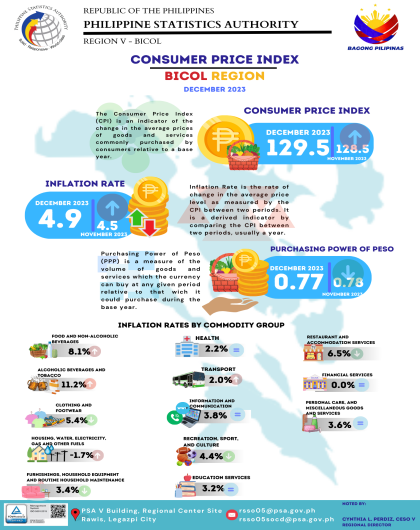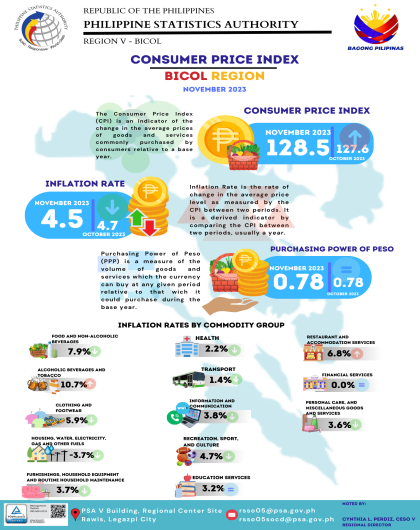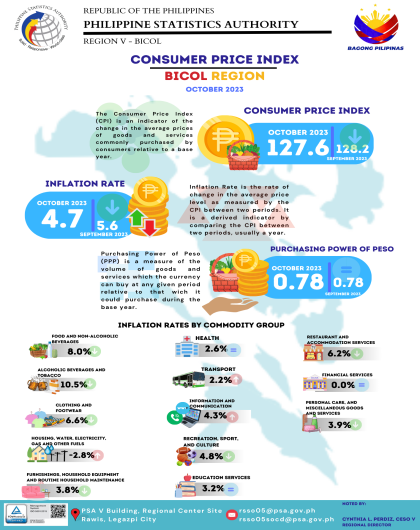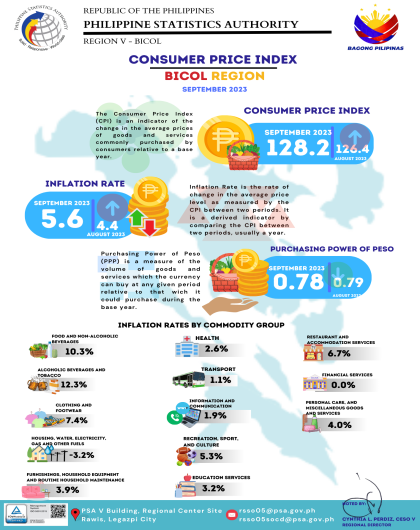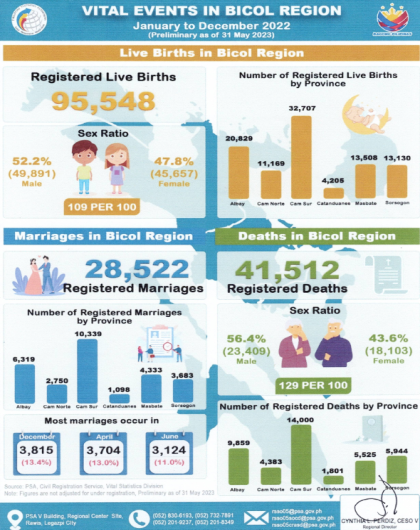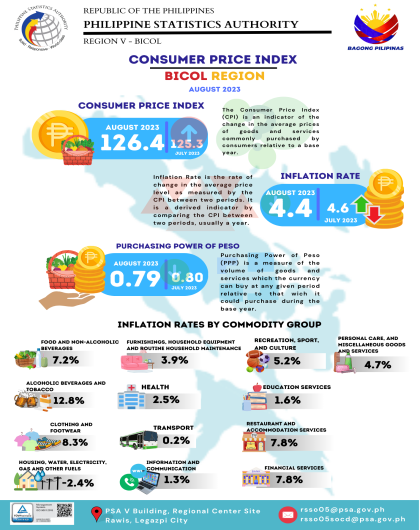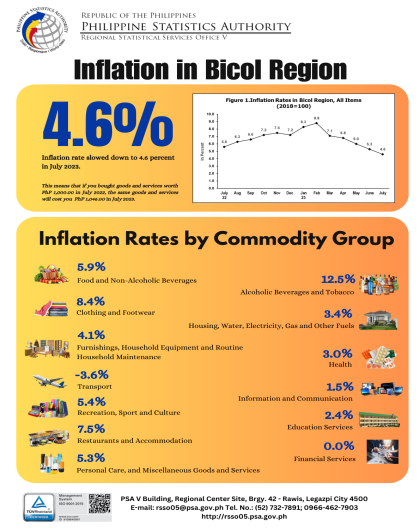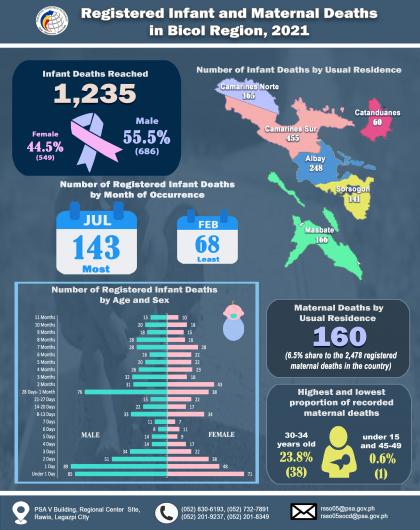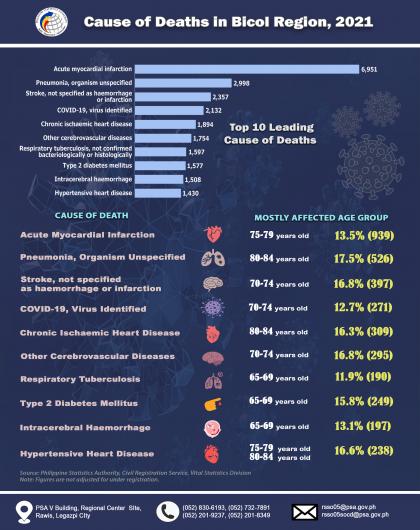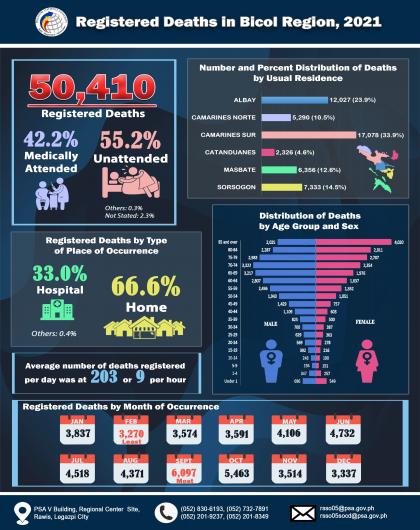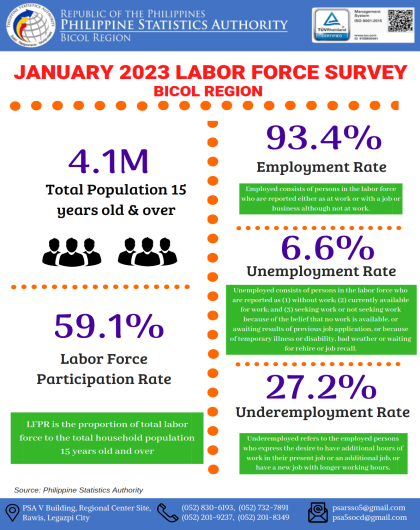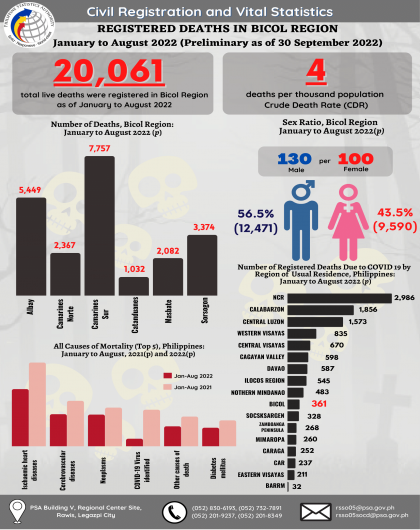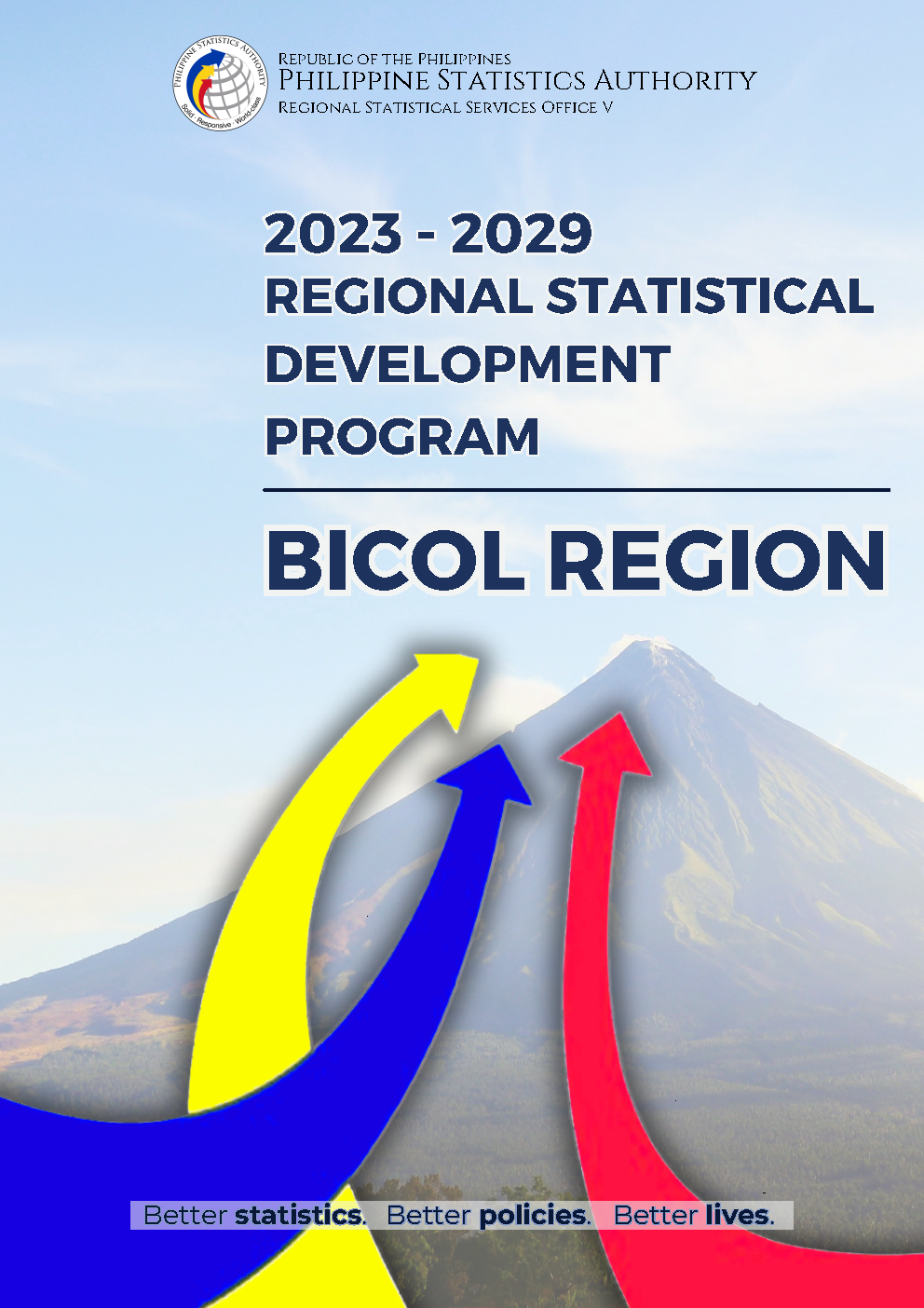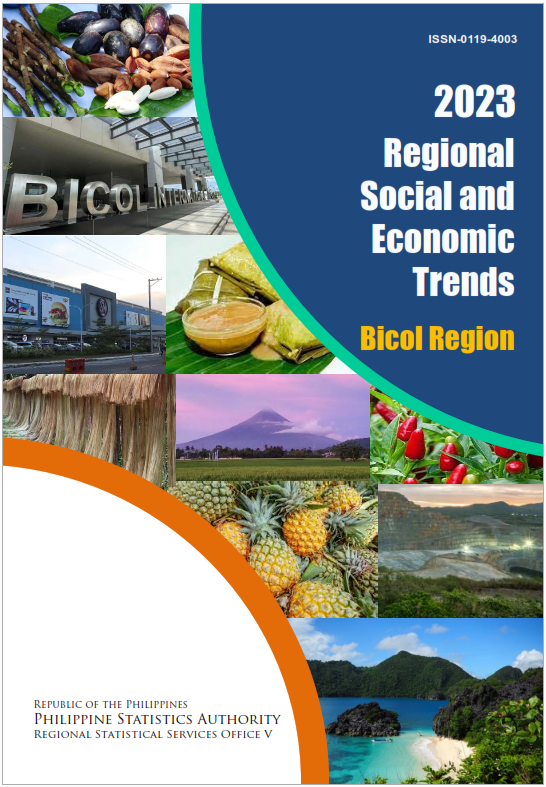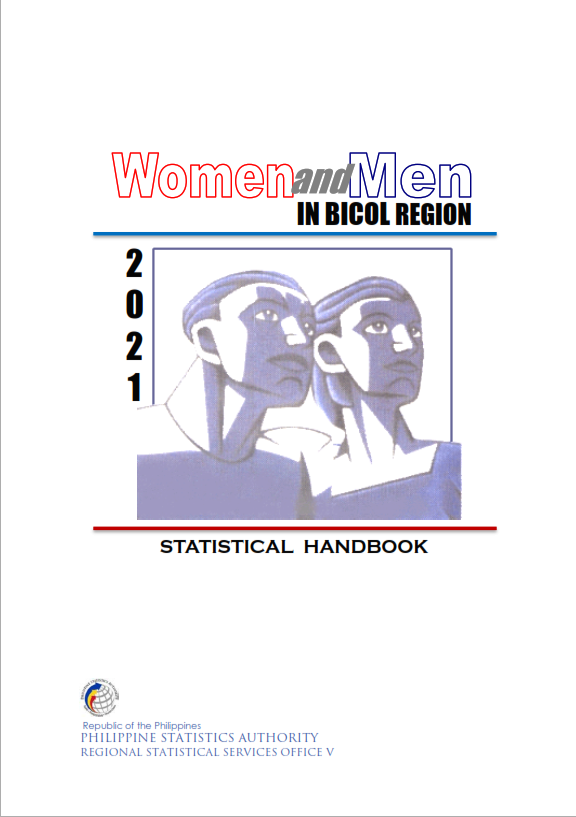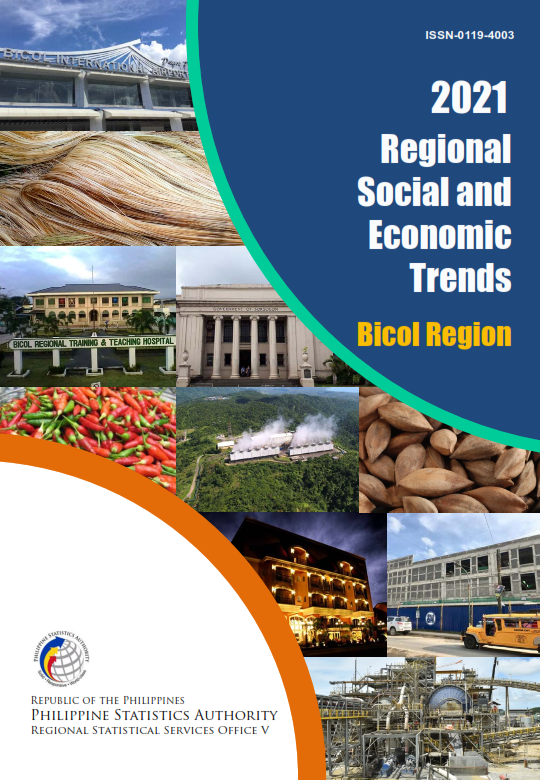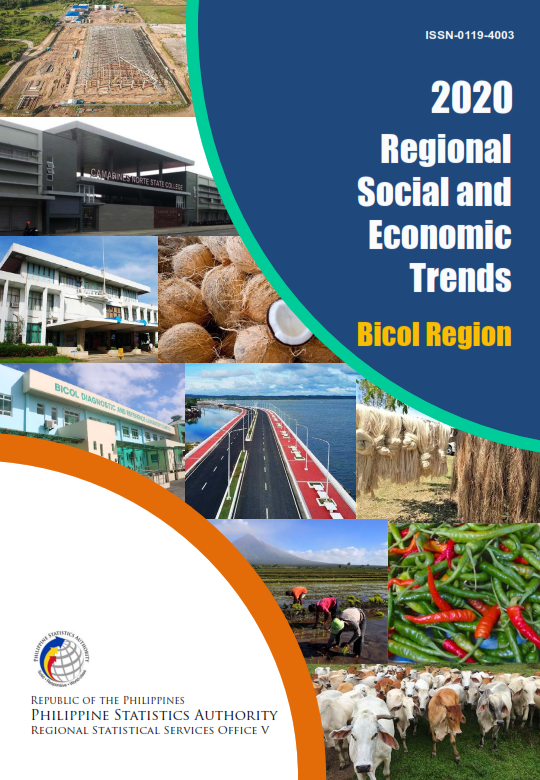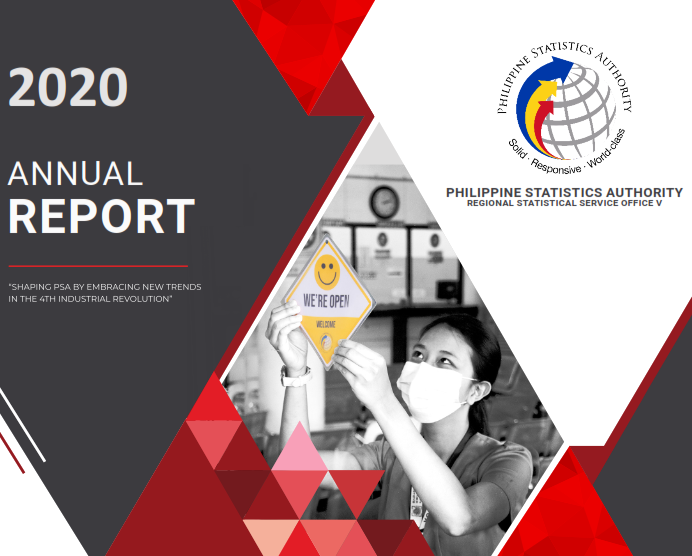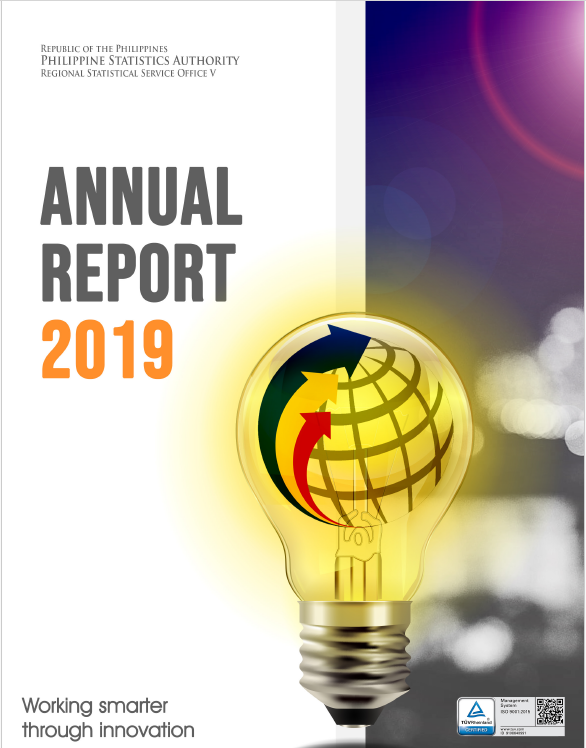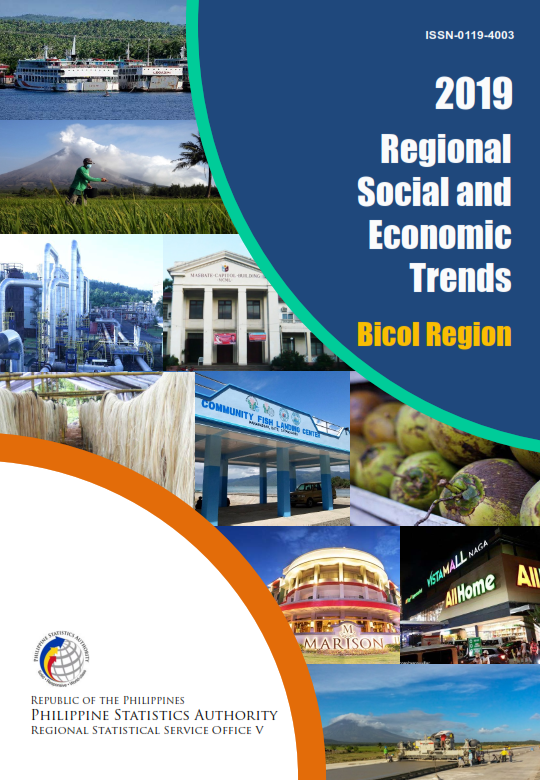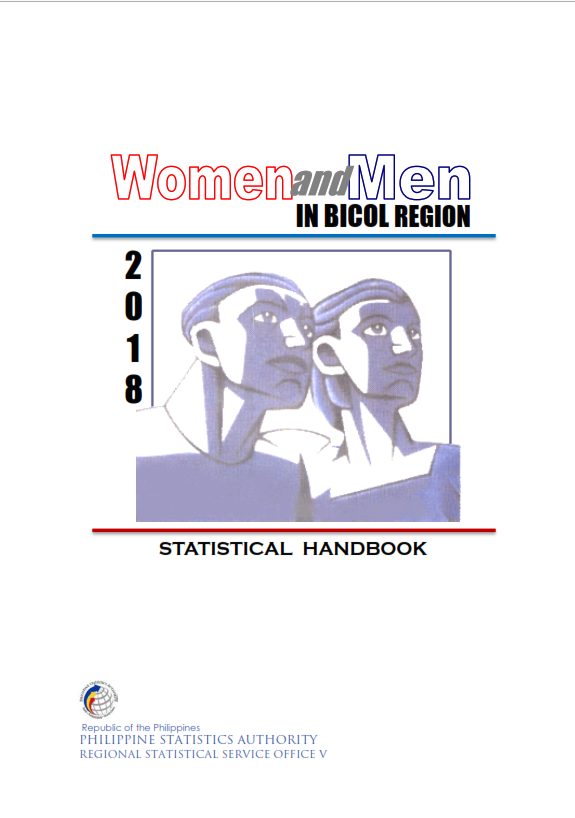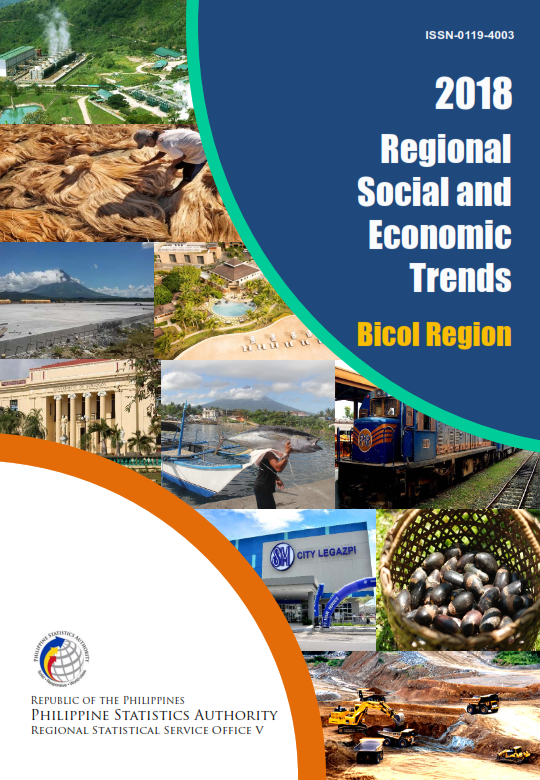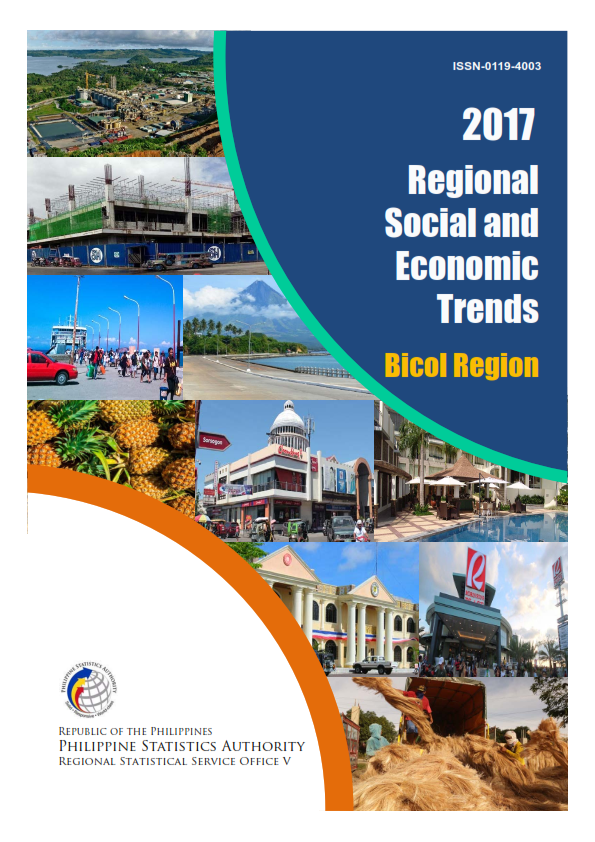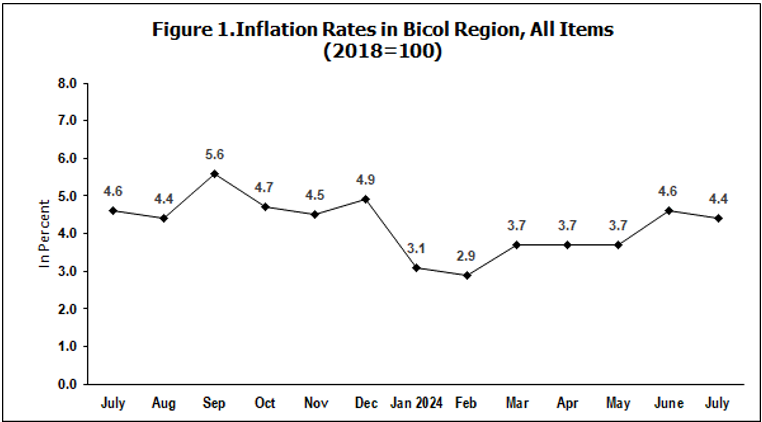
Headline Inflation
The region’s headline inflation or overall inflation decelerated to 4.4 percent in July 2024 from 4.6 percent in June 2024. This brings the regional average inflation from January to July 2024 to 3.7 percent. In July 2023, inflation rate was higher at 4.6 percent.
Main Drivers to the Downward Trend of the Headline Inflation
The downtrend in the overall inflation in July 2024 was primarily influenced by the decrease in the index of housing, water, electricity, gas and other fuels at -2.1 percent during the month from 0.0 percent in June 2024. Also contributing to the downtrend were the slower annual increases in the indices of restaurants and accommodation services with 3.1 percent in July 2024 from 3.5 percent in June 2024, and clothing and footwear with 5.0 percent inflation in July 2024 from 5.6 percent inflation in the previous month.
Moreover, slower annual increments were noted in the index of alcoholic beverages and tobacco with 2.9 percent in July 2024 from 3.5 percent in June 2024.
In contrast, the following commodity groups registered higher inflation rates during the month:
a. Food and non-alcoholic beverages, 7.5 percent from 7.2 percent;
b. Health, 1.6 percent from 1.5 percent;
c. Transport, 5.3 percent from 4.9 percent;
d. Information and communication, 4.4 percent from 4.3 percent;
e. Recreation, sport and culture, 3.2 percent from 3.1 percent;
f. Education services, 3.6 percent from 3.2 percent; and
g. Personal care, and miscellaneous goods and services, 3.2 percent from 3.1 percent.
The indices of the rest of the commodity groups retained their respective previous month’s annual rates.
Main Contributors to the Headline Inflation
The top three commodity groups contributing to the July 2024 overall inflation were the following:
a. Food and non-alcoholic beverages with 78.3 percent share or 3.4 percentage points;
b. Transport with 8.8 percent share or 0.4 percentage point; and
c. Restaurants and accommodation services with 4.6 percent share or 0.2 percentage point.
Food Inflation
Food inflation at the regional level rose to 7.8 percent in July 2024 from 7.3 percent in June 2024. In July 2023, food inflation was lower at 5.9 percent.
Main Drivers to the Upward Trend of Food Inflation
The acceleration of food inflation in July 2024 was mainly brought about by the year-on-year increase in meat and other parts of slaughtered land animals index at 5.0 percent in July 2024 from 2.9 percent in the previous month. The index of milk, other dairy products and eggs also contributed to the uptrend with an inflation rate of 1.7 percent during the month from -0.2 percent in June 2024.
Moreover, faster annual increments were noted in the indices of the following food groups during the month:
a. Corn, 9.0 percent from 7.7 percent;
b. Flour, bread and other bakery products, pasta products, and other cereals, 4.2 percent from 3.6 percent.
c. Vegetables, tubers, plantains, cooking bananas and pulses, 2.5 percent from 2.4 percent; and
d. Ready-made food and other food products not elsewhere classified, 6.5 percent from 6.3 percent.
In addition, slower annual decline was noted in the indices of fish and other seafood at 1.5 percent, and oils and fats at 5.8 percent in July 2024 from their respective year-on-year decreases of 1.9 percent and 6.5 percent in June 2024.
On the contrary, slower annual growth rates during the month were observed in the indices of the following food groups:
a. Rice, 27.8 percent from 29.1 percent; and
b. Fruits and nuts, 0.8 percent from 1.3 percent.
c.
Moreover, faster annual decrease of 5.8 percent was observed in the sugar, confectionery and desserts index during the month from a 5.3 percent year-on-year drop in June 2024.
Main contributors to the Food Inflation
Food inflation shared 75.9 percent or 3.3 percentage points to the overall inflation in July 2024. The top three food groups in terms of contribution to the food inflation during the month were the following:
a. Cereals and cereal products, which includes rice, corn, flour, bread and other bakery products, pasta products, and other cereals, with a share of 88.9 percent or 6.9 percentage points;
b. Meat and other parts of slaughtered land animals with a share of 9.3 percent or 0.7 percentage point; and
c. Ready-made food and other food products not elsewhere classified with a share of 3.3 percent or 0.3 percentage point.
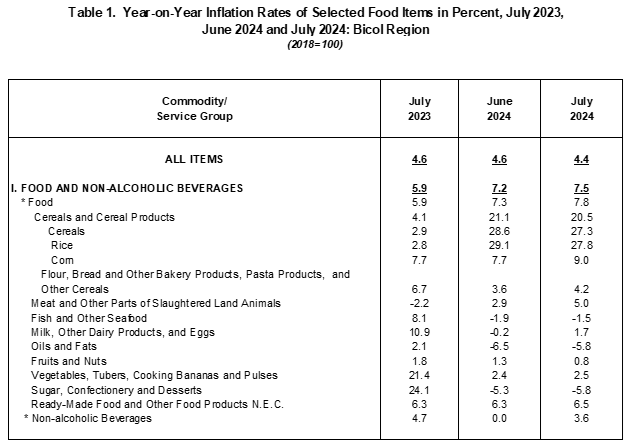
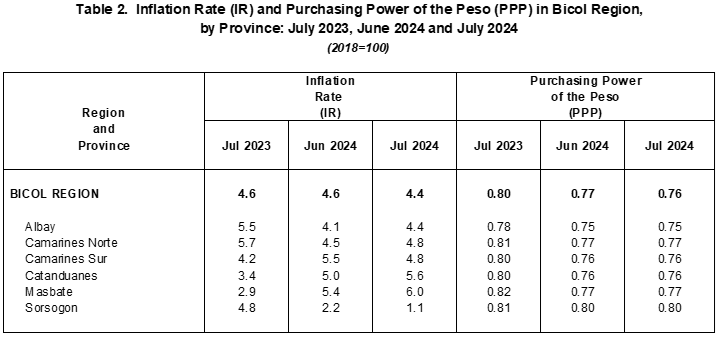
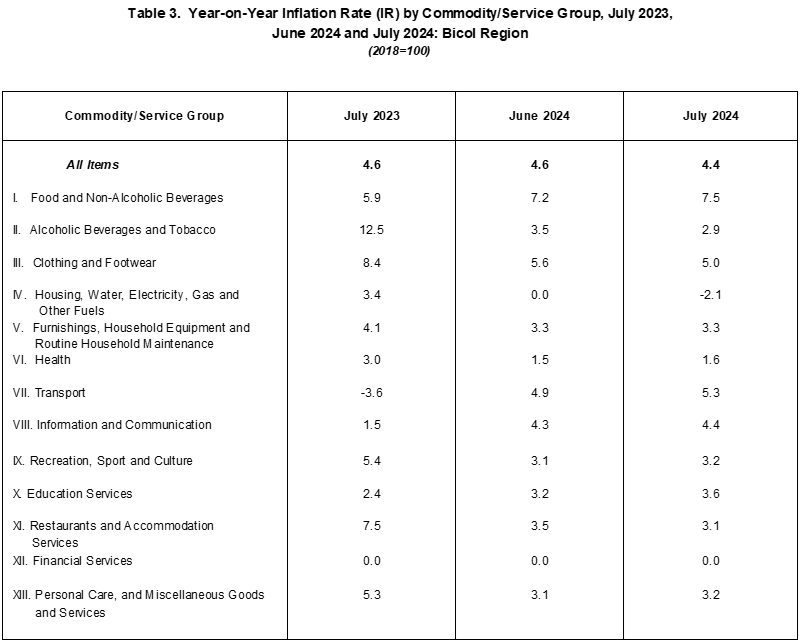
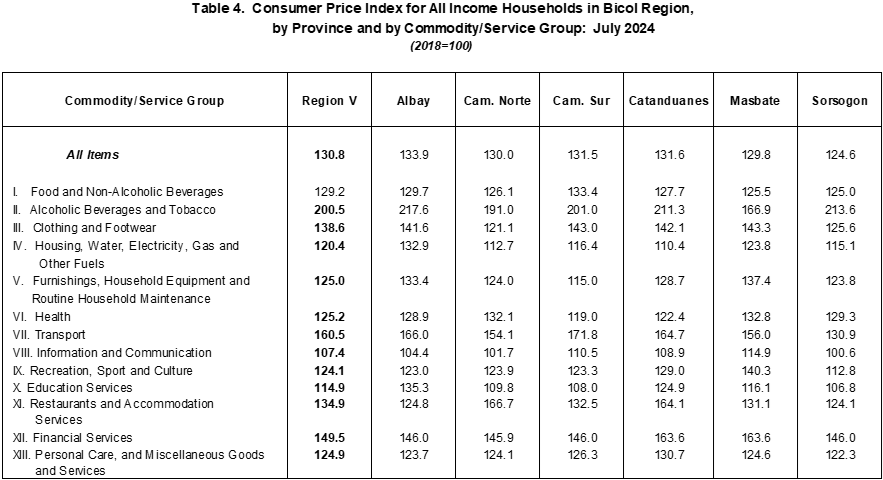
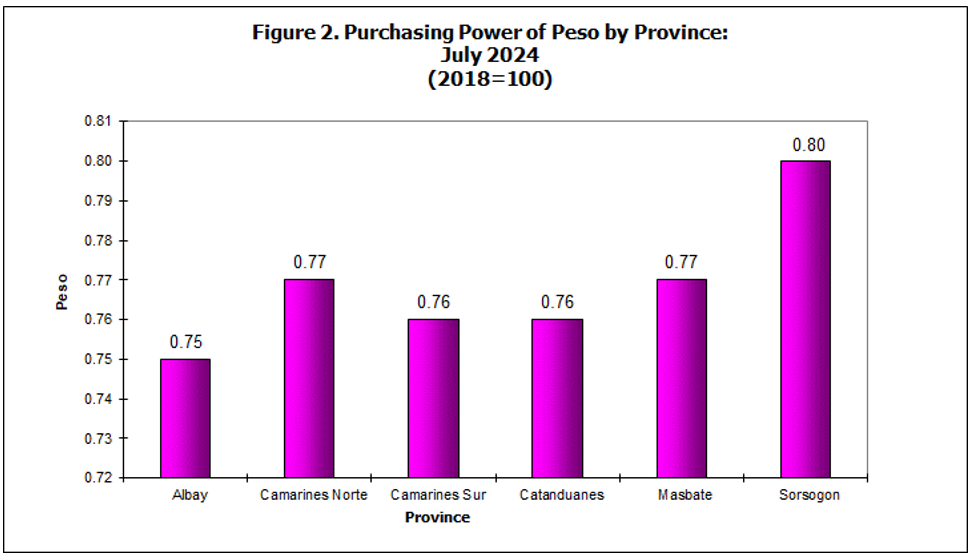
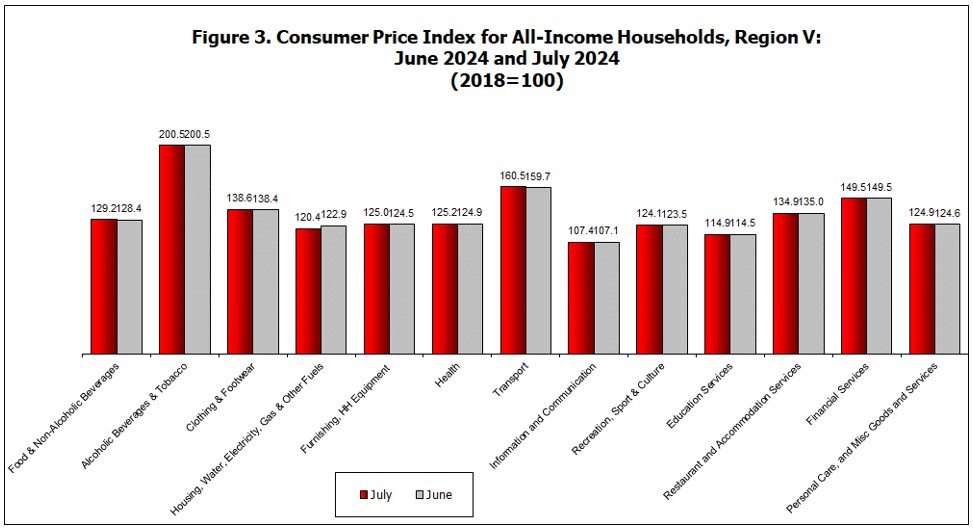
DEFINITIONS AND CONCEPTS
Consumer Price Index - a statistical measure of the change in average retail prices of a fixed basket of goods and services bought by a specific group of consumers in a given area in a given period of time.
Purchasing Power of the Currency or Peso (PPP) - a measure of the volume of goods and services which the currency can buy at any given period relative to that which it could purchase during the base year. It is computed as the reciprocal of the CPI for the period under review multiplied by 100.
Market Basket - the total number of goods and services in constant amounts and qualities which are samples of the goods and services available in the market and included in the construction of the index. CPI market basket was selected to represent the composite price behavior of all goods and services purchased by consumers. Composition of the 2012 market basket was determined based on the results of the 2018 update of the 2012 basket. Provinces and selected cities had own market baskets.
Base Year - it identifies the base period with which the index relates. It is a period of time chosen as reference on which a price index is computed. The index for the base year is 100.
Retail Price - the actual price at which retailers sell a commodity on spot or earliest delivery, usually in small quantities for consumption and not for resale. It is confined to transactions on cash basis in the free market and excludes black-market prices and prices of commodities that are on sale as in summer sales, anniversary sales, Christmas sales, etc.
Percent Change - the percent point change expressed as percent of the index of the earliest date.
Inflation Rate - the annual rate of change or the year-on-year change of the CPI. Inflation is interpreted in terms of declining purchasing power of money.
Note to Users:
The monthly Consumer Price Index is computed based on the average retail prices of goods and services collected during the first week and mid-month of the reference month.

